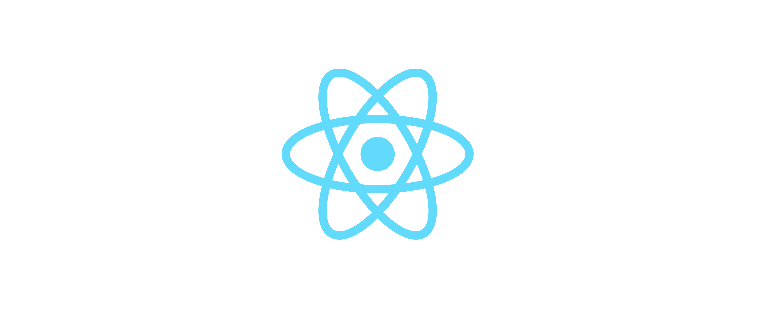旧版博客里草草的过了一遍React,说来惭愧,其实就没有好好学,所以根基不稳。写完之前的前后端不分离的项目之后,还是打算好好折腾一下前后端分离。所以,这次就慢慢来看React和它的伙伴们啦。
经过对比UI库,发现要学那还得学历久弥新的Material-UI,所以也没什么好说的,慢慢搞起。
环境配置
全局安装create-react-app是必然的。之后使用其创建一个React项目。之后把App.js清空,去掉index.css和App.css以及那些图标的引用,一个干净的React项目就准备好了。
安装MUI模块
按照Installation的指引,安装如下的MUI模块:
npm install @mui/material @emotion/react @emotion/styled
字体链接
Material-UI需要Roboto字体,国内有个字体代理,只需要把
<link
rel="stylesheet"
href="https://fonts.googleapis.com/css?family=Roboto:300,400,500,700&display=swap"
/>
中的googleapis.com替换成loli.net就可以了,所以在index.html中添加下边这行:
<link
rel="stylesheet"
href="https://fonts.loli.net/css?family=Roboto:300,400,500,700&display=swap"
/>
使用图标
图标有两种使用方式,我研究了一下才学会。
直接引入Google Fonts的链接
这种方法,只需要把下边这行加入index.html:
<link
rel="stylesheet"
href="https://fonts.loli.net/icon?family=Material+Icons"
/>
然后在实际使用图标的时候,到https://fonts.google.com/icons这个页面,点上边的Filled,之后点击想要的图标,看右侧出来的比如:
<span class="material-icons">home</span>
把这段代码贴到项目里,就能显示出对应的图标。
用此种方式,我没找到如何能引用其他种类的图标,就是页面里除了Filled之外的Outlined等类型的图标。
使用MUI提供的图标库
MUI已经预先把这套图标弄好了SVG版本,可以通过库导入然后来使用。
使用的方法是先通过npm安装:
npm install @mui/icons-material
之后在图标库中查找想要使用的图标,有五种主题可供选择,选好主题之后点击具体图标,就会显示出该图标的组件代码,复制到项目中即可使用。
举个例子,AccountBalanceWalletIcon这个图标的五种样式代码,写在组件里:
import AccountBalanceWalletIcon from '@mui/icons-material/AccountBalanceWallet';
import AccountBalanceWalletOutlinedIcon from '@mui/icons-material/AccountBalanceWalletOutlined';
import AccountBalanceWalletRoundedIcon from '@mui/icons-material/AccountBalanceWalletRounded';
import AccountBalanceWalletTwoToneIcon from '@mui/icons-material/AccountBalanceWalletTwoTone';
import AccountBalanceWalletSharpIcon from '@mui/icons-material/AccountBalanceWalletSharp';
const styleBottom = {"verticalAlign": "bottom"};
function App() {
return (
<div>
<ul>
<li >Filled: <AccountBalanceWalletIcon color="primary" fontSize="small" style={styleBottom}/></li>
<li>Outlined: <AccountBalanceWalletOutlinedIcon color="secondary" style={styleBottom}/></li>
<li>Rounded: <AccountBalanceWalletRoundedIcon color="success" fontSize="large" style={styleBottom}/></li>
<li>TwoTone: <AccountBalanceWalletTwoToneIcon color="action" style={styleBottom}/></li>
<li>Sharp: <AccountBalanceWalletSharpIcon color="disabled" sx={{fontSize:40}} style={styleBottom}/></li>
</ul>
</div>
);
}
export default App;
五种样式都可以使用,然后可以自定义大小,颜色和其他样式,使用起来非常方便。
推荐采用图标库的方式引入字体,而且采用此种方式引入后,由于是webpack负责打包,所以不需要在index.html中加入对于Google Fonts的link标签了。
普通图标的API在这里,有了API就知道可以给图标组件传递什么props了。既然有了这套图标就可以专心用了,图标页面里也说了和其他图标库搭配使用的一些问题。
CDN安装MUI
如果不采用脚手架,而是直接使用的话,那么React和MUI都要通过CDN引入,那么引入的模板如下:
<!DOCTYPE html>
<html lang="en">
<head>
<title>My page</title>
<meta charset="utf-8" />
<meta name="viewport" content="initial-scale=1, width=device-width" />
<script src="https://unpkg.com/react@latest/umd/react.development.js" crossorigin="anonymous"></script>
<script src="https://unpkg.com/react-dom@latest/umd/react-dom.development.js"></script>
<script src="https://unpkg.com/@mui/material@latest/umd/material-ui.development.js" crossorigin="anonymous"></script>
<script src="https://unpkg.com/babel-standalone@latest/babel.min.js" crossorigin="anonymous"></script>
<link rel="stylesheet" href="https://fonts.googleapis.com/css?family=Roboto:300,400,500,700&display=swap" />
<link rel="stylesheet" href="https://fonts.googleapis.com/icon?family=Material+Icons" />
</head>
<body>
<div id="root"></div>
<script type="text/babel">
......
</script>
</body>
</html>
既然有了脚手架,不推荐此种方法。MUI官方提供了一个示例可以进行参考。
写一个简单的登录页面
React的基本功能已经学会了,既然要搭配MUI一起,就慢慢研究一下各个组件。先写一个简单的居中登录页面练练手吧。
Container组件
居中登录页面的话,肯定是要使用flex了,让所有的元素水平和垂直都居中。
不管什么样的页面,最外层先来一个Container组件,这个组件的最大宽度就设置为xs,本身就足够居中了。
flex组件
MUI并没有提供flex组件,需要自己写。一般来说,在Container里边用一个Box组件就可以了,这个和Bootstrap的套路很相似。但是要手动通过sx属性来添加flex属性,这个组件如下:
<Box sx={{display: "flex", flexDirection: "column",height:"100vh",justifyContent: "center"}}>
</Box>
由于这里更改了主轴为列对齐,所以要使用justifyContent: "center"属性,因为还是主轴上居中,这样Box组件中的内容就会在页面居中对齐了。
剩下的组件
由于还没有具体学如何使用,但是可以依样画葫芦抄MUI的用法,抄了几个东西写在Box的组件内部,如下:
<Box sx={{display: "flex", flexDirection: "column", height: "100vh", justifyContent: "center"}}>
<Typography align="center">
<AccountCircleOutlinedIcon color="primary" fontSize="large"/>
</Typography>
<Typography align="center" variant="h6">请登录</Typography>
<Box sx={{textAlign: "center"}}>
<TextField fullWidth
id="outlined-password-input"
label="Username"
type="text"
autoComplete="current-password"
/>
</Box>
<Box sx={{textAlign: "center", marginTop: "16px"}}>
<TextField fullWidth
id="outlined-password-input"
label="Password"
type="password"
autoComplete="current-password"
/>
</Box>
<Box sx={{textAlign: "center", marginTop: "16px"}}>
<Button fullWidth variant="contained">Login</Button>
</Box>
</Box>
这样这个简单的登录页面就写好了,其他加上Remember Me或者忘记密码等东西的效果,也是很简单的。实际上,由于人眼的效果,垂直居中的东西整体上显得往下沉,所以实际操作中,还是采取列排列,但是会把上边留白,不会直接使用justifyContent: "center"。
CssBaseline组件
MUI提供了一个重置CSS样式的组件CssBaseline,一般是包裹在最外层的组件之外,起到的作用和normalize.css等库是一样的。所以只要把这个东西包在最外层,或者作为Container组件的子元素即可。
